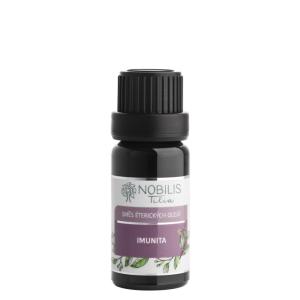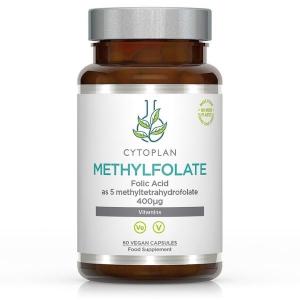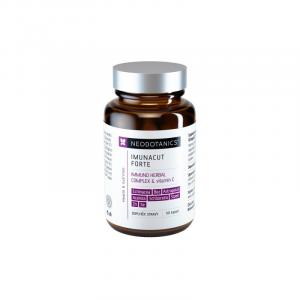
Sojanéza adds lightness and a fresh taste to your recipes.

Plant-Based Alternative to Classic Mayonnaise?
When you say mayonnaise, most people think of the classic thick sauce made from eggs and oil that is a staple at barbecues, in potato salad, or as a base for spreads. But what if there is an alternative that tastes just as good, is lighter, vegan, and incredibly versatile? That's exactly what soyanese offers – a plant-based version of mayonnaise based on soy milk, which is gaining more and more fans not only among vegans and vegetarians.
This modern delicacy is appealing not only for its taste but also for its simplicity of preparation. At a time when more and more people are mindful of the ingredients in their food and concerned with the health impacts of their diet, soyanese proves to be a smart and tasty choice. And while at first glance it may seem like a health food trend, upon closer inspection, it surprises with how easily it fits into traditional Czech cuisine.
What is Soyanese and Why Try It
Soyanese is a plant-based alternative to mayonnaise made primarily from soy milk and vegetable oil. Unlike classic mayonnaise, it doesn't contain eggs, making it suitable for vegans and those with egg protein allergies. The resulting texture is just as creamy and thick as classic mayonnaise, and importantly – it doesn't fall short in flavor.
In addition to soy milk and oil, it's often enriched with lemon juice, vinegar, mustard, salt, and possibly other seasonings like garlic or herbs. The key to success is the proportion of ingredients and the correct mixing technique. When prepared well, the result is so successful that many people like it so much that they stop using classic mayonnaise altogether.
Another advantage is that soyanese doesn't contain cholesterol and when using quality oils, it can also be a source of healthy unsaturated fatty acids. It's ideal not only for a vegan diet but also for those who try to limit animal products or monitor their fat intake.
A Simple Recipe Anyone Can Handle
Although soyanese is now available in some health food stores or supermarket shelves, the best is to make it at home. The advantage of the homemade version is not only freshness and the ability to adjust the flavor to your preferences, but also control over the ingredients.
The basic recipe for homemade soyanese is surprisingly simple:
Ingredients:
- 100 ml unsweetened soy milk (preferably at room temperature)
- 200 ml sunflower or canola oil
- 1 tablespoon apple cider vinegar or lemon juice
- 1 teaspoon Dijon mustard
- Salt to taste
- Optional: a pinch of garlic, turmeric, or fresh herbs
Procedure:
- Fill a tall container with soy milk and add vinegar, mustard, and salt.
- Slowly pour in the oil and mix with an immersion blender. The mixture should thicken within a few seconds.
- Season to taste and store in a sealed container in the refrigerator for up to a week.
The key to success is to use unsweetened soy milk and have it at the same temperature as the oil – ideally room temperature. If you don't achieve the right consistency on the first try, don't worry. Adding a tablespoon of more oil and further mixing often helps.
Soyanese Has Wide Uses in the Kitchen
One of soyanese's greatest strengths is its versatility. It works as a substitute for classic mayonnaise in virtually all recipes while adding a fresh, subtly plant-based flavor to dishes. Whether you use it as a base for vegan potato salad, in sandwiches, wraps, or as a dip for roasted vegetables, it always adds creaminess and fullness of flavor to meals.
An interesting way to use it is, for example, spread with roasted red beet and soyanese, which is attractive not only in color but also nutritionally. Or try mixing a little wasabi into soyanese, and you have the perfect condiment for sushi or grilled vegetables. The possibilities are endless.
Thanks to its composition, it is also ideal for children, allergy sufferers, and people with lactose or egg intolerance. In practical life, soyanese can replace not only mayonnaise but also creamy dressings or sour cream, making it a truly versatile component of home cooking.
A Step Closer to Sustainability
While taste and usability are strong arguments for trying soyanese, its ecological aspect is often overlooked. The production of plant-based alternatives generally has a lower carbon footprint than the production of animal products. According to studies by global organizations such as the FAO or IPCC, animal husbandry is responsible for a significant portion of greenhouse gas emissions.
Using plant ingredients like soy milk thus contributes to reducing the ecological footprint. Additionally, there is no need for a refrigeration chain for transporting fresh eggs, and the risk of transmitting bacteria like salmonella is reduced, which is a common problem with homemade mayonnaise.
It is fair to say that when you make soyanese at home, you not only do something good for your body but also contribute to a more sustainable way of eating.
How Soyanese Changed a Family Recipe
The Novák family from Olomouc prepares traditional potato salad every Christmas according to grandma's recipe. When their daughter Petra decided to switch to a vegan diet, they looked for a way to modify the recipe so everyone could enjoy it together. Petra suggested using homemade soyanese instead of classic mayonnaise – initially skeptical, the parents were pleasantly surprised after tasting it. "It tasted exactly the same, maybe even better," says Mrs. Nováková. Since then, they have been using soyanese regularly, not just at Christmas.
This simple example shows how easily traditional recipes can be adapted for modern eating without sacrificing taste or family harmony.
Soyanese as Part of a Healthy Lifestyle
Nowadays, with increasing interest in healthy eating, the popularity of simple, natural foods is also growing. Soyanese fits perfectly into the diet of people who monitor their fat intake, avoid cholesterol, or have various food intolerances. By being easily prepared at home, you can also avoid preservatives, additives, and unnecessary calories.
One of its biggest benefits is the ability to adapt to current needs – adding herbs like chives, basil, or dill turns it into a fresh herbal dressing. Conversely, with a bit of garlic and lemon juice, you get a spicy sauce for grilled dishes. In the colder months, it can be enriched with turmeric or warming curry spices, enhancing not only the flavor but also immunity.
Try our natural products
As American nutrition specialist Dr. Greger stated: "It's not just about what you leave out of your diet, but what you add to it." Soyanese is exactly the type of food that brings flavor, nutrition, and simplicity to everyday cooking.
Whether you decide to try soyanese for health, taste, or sustainability, one thing is certain – it's a small change that can have a big impact. In the kitchen, it quickly becomes an indispensable helper, and its popularity across generations confirms that plant-based alternatives are not just a trend but a thoughtful step towards better eating.







